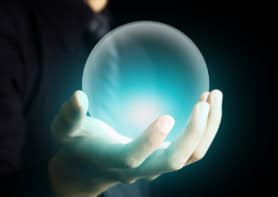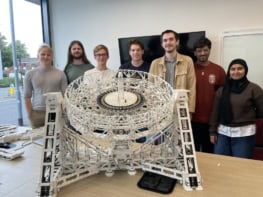Physicists love LEGO – indeed, Physics World has published 48 items about the interlocking bricks including the podcast “Physics and LEGO: an enduring love affair”. Now, Brian Anderson of Brigham Young University in the US and colleagues have come up with a way to knock over LEGO minifigures using focused vibrational energy.
The team placed several figures on a plate that was shaken by several strategically placed loudspeakers. Using a technique called time reversal, they worked out the interference between waves from each speaker. This allowed them to concentrate the vibrations at a specific figure, causing it to fall over – while other figures were spared (see video).
Not content to keep their discovery in the lab, the team then used the effect to create a game whereby two players adjust the vibrations to try to knock over their opponent’s figures. Their game has already made its debut at ETH Zurich in Switzerland in an exhibition about waves.
Not surprisingly, the team says that there are other more practical applications of focused sound including the non-invasive destruction of kidney stones and brain tumours. The team described the research at the 181st Meeting of the Acoustical Society of America in Seattle.
Snow tracker
If my childhood memories of Montreal are anything to go by, heavy snowfalls are a regular occurrence in the Canadian province of Quebec. Now, researchers at the Institut national de la recherche scientifique (INRS) have developed a new way of tracking snow depth on a continuous basis – something that could be very useful for avoiding damage to roofs caused by heavy snow and predicting spring meltwater, which can often cause flooding.
Created by Anas El Alem, Karem Chokmani and colleagues at INRS, the technique involves measuring the infrared reflectance of snow lying on the ground, which the team has related to the density of the snowpack. By making regular measurements, the system can track the changes in density that occur over time.
The team says that probes can be installed and left over the winter, communicating data via a mobile or satellite phone connection. This requires much less work that current monitoring, which involves sending people out to take regular core samples of the snowpack.
While other remote sensors are available, those measure overall density rather than density within different strata – which is useful information to have. You can read more about the new sensor in “Estimating snowpack density from near-infrared spectral reflectance using a hybrid model”.



